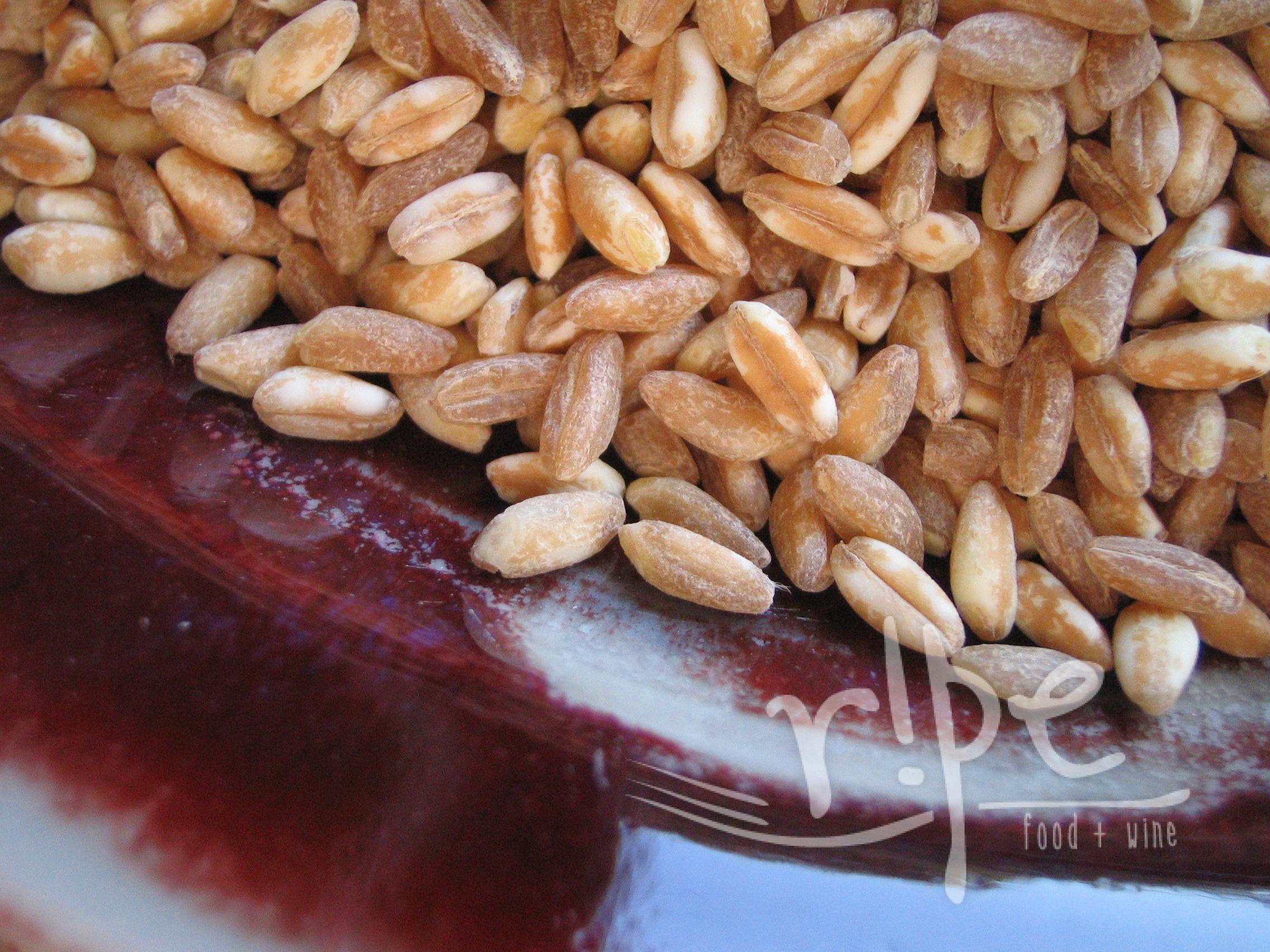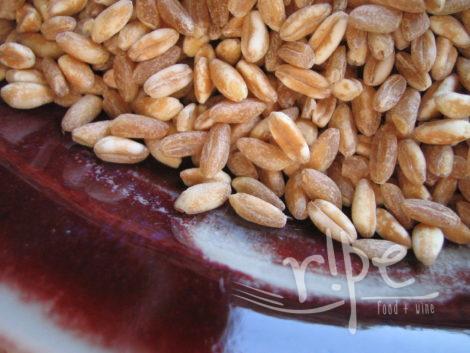Farro is an ancient variety of wheat, usually sold and prepared with its whole grain intact, meaning you are eating the grain kernel plus its germ and bran — a great way to get fiber and lots of vitamins, minerals, and phytochemicals, good-for-you plant compounds. When cooked, farro has a chewy, al dente texture and nutty flavor. Use it in salads, soups, risottos, and pilafs like this fantastic one from Joyce Goldstein, Farro with Butternut Squash and Chestnuts.
Ingredients
- 1 1/2 cups farro
- 6 cups water
- 2 teaspoons salt
Instructions
- Bring water to boil in a large saucepan. Sprinkle in the salt and the farro. Cook until farro is tender, start testing at 15 minutes. You want the farro grains to be chewy, but not hard.
- Drain the water and you're ready to serve or use in another recipe. Alternatively, you can cool to room temperature and refrigerate for up to a week.
Ripe Food & Wine | http://www.ripefoodandwine.com | Amy Andrews amy@ripefoodandwine.com
Amy’s Kitchen Coach Tips
- Farro loves browned butter and sage. Melt butter and cook until golden brown, add the cooked farro, some sage (fresh or dried) and cook on the stovetop over medium-high heat until farro is hot. The grains become crunch outside but keep their chewy center. Serve with roasted winter squash, nuts and/or salty cheese like feta or ricotta salata.
- Use cooked farro as a substitute for cooked rice or wheatberries in salad recipes
- Updated July 2016: Farro is not the same as spelt. They are both ancient varieties of wheat, but farro is a different variety and cooks faster. Jenny, from Nourished Kitchen, clears up some of the misunderstanding in this post.
- Sometimes you’ll see the term “perlato” or “semi-perlato” on bags of farro. This means that some of the bran has been removed for faster cooking and softer texture.





